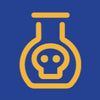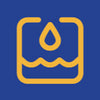Reduces 99% PFAS / Forever Chemicals
Reduces ≥50% Chlorine
Achieves 20ppt PFAS Reduction
Reduces 99% PFAS / Forever Chemicals
Reduces ≥50% Chlorine
Achieves 20ppt PFAS Reduction

Peace of Mind On the Go
When you use our Filter Water Bottle, you simply fill it up and go! It’s perfect for outdoor activities, emergency situations, international travel, or even just your daily commute.
Cutting-Edge Filtration Technology
Our unique technology has been put to the test in the medical and dental industries. Now, it’s ready to travel with you and provide cleaner water from almost any source. No matter where your day takes you, the Campbell Ultrafiltration+ Filter Water Bottle reduces:
- Total PFAS / Forever Chemicals 99%
- Meets the 20ppt requirement for total PFAS reduction
- Chlorine ≥50%


Perfect for Athletes
Cleaner, safer water is crucial for athletes of all ages to perform at their best. Use the filter water bottle at the gym, or send it along with your kids for their next tournament. Perfect for all-day competitions or lengthy rides on the team bus, the filter bottle is an athlete’s best friend.
Easy to Use – and Even Easier to Clean
Perfect use of our filter bottle requires just one step: Fill it up! When it’s time to wash, simply toss the bottle & cap in the dishwasher (the filter does not require any cleaning), and it’s ready for your next adventure.

FAQ
PFAS (also referred to as "forever chemicals") are a group of manufactured chemicals that have been used in industry and consumer products since the 1940s because of their useful properties. There are thousands of different PFAS, some of which have been more widely used and studied than others.
Perfluorooctanoic Acid (PFOA) and Perfluorooctane Sulfonate (PFOS), for example, are two of the most widely used and studied chemicals in the PFAS group. PFOA and PFOS have been replaced in the United States with other PFAS in recent years.
One common characteristic of concern of PFAS is that many break down very slowly and can build up in people, animals, and the environment over time.
PFAS National Primary Drinking Water Regulation
On April 10, 2024, EPA announced the final National Primary Drinking Water Regulation (NPDWR) for six PFAS. To inform the final rule, EPA evaluated over 120,000 comments submitted by the public on the rule proposal, as well as considered input received during multiple consultations and stakeholder engagement activities held both prior to and following the proposed rule. EPA expects that over many years the final rule will prevent PFAS exposure in drinking water for approximately one hundred million people, prevent thousands of deaths, and reduce tens of thousands of serious PFAS-attributable illnesses.
EPA is also making unprecedented funding available to help ensure that all people have clean and safe water. $1 billion through the Bipartisan Infrastructure Law to help states and territories implement testing and treatment at public water systems and to help owners of private wells address PFAS contamination.
EPA finalized a National Primary Drinking Water Regulation (NPDWR) establishing legally enforceable levels, called Maximum Contaminant Levels (MCLs), for six PFAS in drinking water. PFOA, PFOS, PFHxS, PFNA, and HFPO-DA as contaminants with individual MCLs, and PFAS mixtures containing at least two or more of PFHxS, PFNA, HFPO-DA, and PFBS using a Hazard Index MCL to account for the combined and co-occurring levels of these PFAS in drinking water. EPA also finalized health-based, non-enforceable Maximum Contaminant Level Goals (MCLGs) for these PFAS.
The EPA has created a wealth of publicly available resources.
Toxicity
Studies indicate that exposure to PFAS over certain levels may result in adverse health effects, including developmental effects to fetuses during pregnancy or to breastfed infants (e.g., low birth weight, accelerated puberty, skeletal variations), cancer (e.g., testicular, kidney), liver effects (e.g., tissue damage), immune effects (e.g., antibody production and immunity), thyroid effects and other effects (e.g., cholesterol changes).
Is there PFAS contamination above the proposed limit in your area?
Standard 42 - Drinking Water Treatment Unit - Chlorine
Standard 53 - Water Treatment Product - Health Effects: Total PFAS* @ 20 ppt (NSF/ANSI 2022 standard testing)
*Total PFAS Pass/Fall Criteria: PFOA+PFOS Combined Maximum Product Water Concentration 0.02 μg/L; PFNA 0.006 μg/L; PFHxS 0.02 μg/L; PFHpA 0.02 μg/L. Total PFAS maximum effluent concentration: 0.02 μg/L (20 PPT)
The NSF/ANSI 42 and 53 testing was conducted by a reputable independent 3rd party ISO 17025 certified laboratory to meet the protocols established by NSF International/ANSI. Testing was performed under standard laboratory conditions at a flow rate of 800 ml/minute (0.211 gallons/minute). The Total PFAS and Chlorine substances removed or reduced by this water treatment device are not necessarily in all users' water. Filter performance may vary based on local water conditions.
Filter life is dependent on the quality of water being filtered. The filter is certified for Total PFAS reduction at 25 gallons. Therefore, the filter should be changed every 25 gallons. Refer to the Performance Data Sheet for more specific details.
Use of the filter bottle with any liquid other than water is not recommended.
When you purchase a filter water bottle you are not only getting clean water for you and your family, you’re also helping others. Campbell will donate $1 for each filter bottle purchased to Water4Kids International, an organization that works with communities around the globe to provide permanent water solutions, including deep-well water drilling, education, operations and management training to ensure equitable access to safe water and sanitation.
Learn more at hope4kidsinternational.org.
- Bottle capacity 16 fl. oz.
- Flow Rate: 800 ml/min (0.211 gallons/minute)
- Rated Capacity for Total PFAS @ 25 gallons
- Rated Capacity for Chlorine @ 35 gallons
- Designed and assembled in the USA
The Campbell Ultrafiltration+ Filter Bottle is dishwasher safe and BPA free. The bottle needs to be flexible in order for water to flow through the filter at optimal levels.
A reusable water bottle reduces the number of single use plastic bottles manufactured and sent to landfills. The rate of plastic recycling in the US is shockingly low, 5%. If a person drinks 64 oz (eight glasses, eight oz each) a day, that is 1,771 bottles of water a year (average size of bottled water 20oz), using a reusable water bottle eliminates 1,771 single use bottles.
Microplastics can come from a variety of sources including larger plastic pieces that have broken apart, resin pellets used for plastic manufacturing, or in the form of microbeads - small, manufactured plastic beads used in health and beauty products. (NOAA).
Ready to experience the difference?





